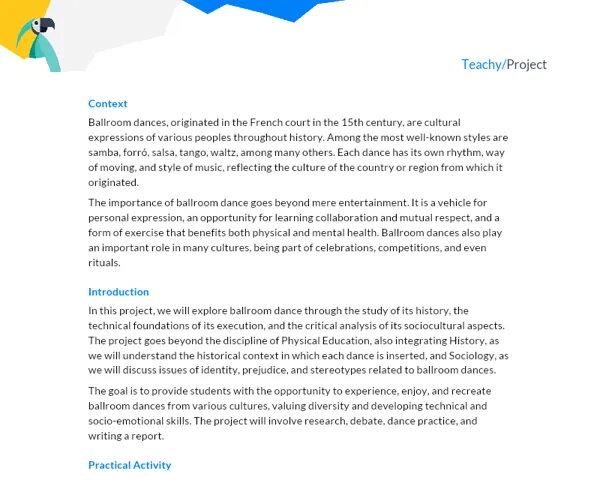Contextualization
Electronic games have revolutionized the way we have fun and interact. They are a form of entertainment that has become increasingly popular among different age groups and are certainly an important part of youth leisure culture.
In the high school context, where many students already have a close relationship with these games, either by playing or watching streams, they can become a powerful pedagogical tool. This approach becomes even more relevant in a subject like Physical Education, where games are part of the content.
The practice of electronic games, besides being a playful activity that promotes student engagement, can also contribute to the development of various socio-emotional skills, such as time management, communication, problem-solving, creative thinking, and proactivity.
Introduction
Electronic games are a form of interactive media that allows players to take control of characters and interact with virtual worlds. They involve rules that define objectives and challenges to be overcome by the players. Additionally, they have reward systems that stimulate player progression and engagement.
Electronic games are classified into various genres, ranging from action and adventure to strategy and simulation. Each genre presents its own gameplay characteristics and rules that influence the player's experience. Moreover, many games promote competitions and championships that drive the e-sports industry.
Many games also encourage socialization and teamwork, either through multiplayer matches or through collaboration in online communities. These aspects can be explored in the school context to stimulate collaboration among students and the development of socio-emotional skills.
Practical Activity
Activity Title: "The Gamer's Journey"
Project Objective
Explore the universe of electronic games, study the dynamics of one or more games and the social impact they have, as well as develop socio-emotional skills through teamwork and structured discussions.
Detailed Project Description
Teams, composed of 3 to 5 students, must choose one or more electronic games (regardless of genre) to be analyzed. The analysis should consider the following aspects:
-
Game Contextualization: explain what the game is, when it was released, what are the main rules, among other details.
-
Gameplay: what is the playing experience like? Is there a predominant strategy in the game? Is it an individual or collective game?
-
Social Impact: how does the game affect society? What are the positive and negative aspects? Is there any controversy surrounding the game?
-
Competitions: is the game part of the e-sports circuit? If so, how do the competitions take place? What are the main tournaments? Who are the most famous players?
-
Critical Analysis: what does the group think of the game? Is there any aspect that could be improved? Do they recommend the game?
In addition, teams must meet regularly to play the chosen game and discuss the above topics. The total time dedicated to the project should be between 5 to 10 hours per student.
Required Materials
Students need a means to play the chosen game (console, computer, mobile phone, among others), internet access for research, and a text editing software for report writing.
Detailed Step-by-Step for Activity Execution
- Team formation.
- Choice of the game(s) to be analyzed.
- Game and discussion of the aspects mentioned in the project description.
- Research and collection of relevant information.
- Write the report, dividing it into Introduction, Development, Conclusion, and Bibliography.
- Report review.
- Report submission.
Project Deliverables
The main product to be delivered is the report, which should follow the following structure:
-
Introduction: Game description, explanation of why the group chose this game, and its relevance in the real world.
-
Development: Detailed gameplay, social impact of the game, predominant strategies, involvement with e-sports (if applicable), and critical analysis of the game. Explanation of how the group organized to play and discuss the game.
-
Conclusion: Recap of the main points of the report, discussion of the lessons learned from the project, and reflections on the experience.
-
Bibliography: References of the materials consulted during the research.
This report should be a compilation of all the discoveries made by the group during the project, combining the theoretical knowledge acquired with the practical experience of playing and analyzing the game. It is important to have a deep and critical discussion of the game's aspects and its impact on society.



